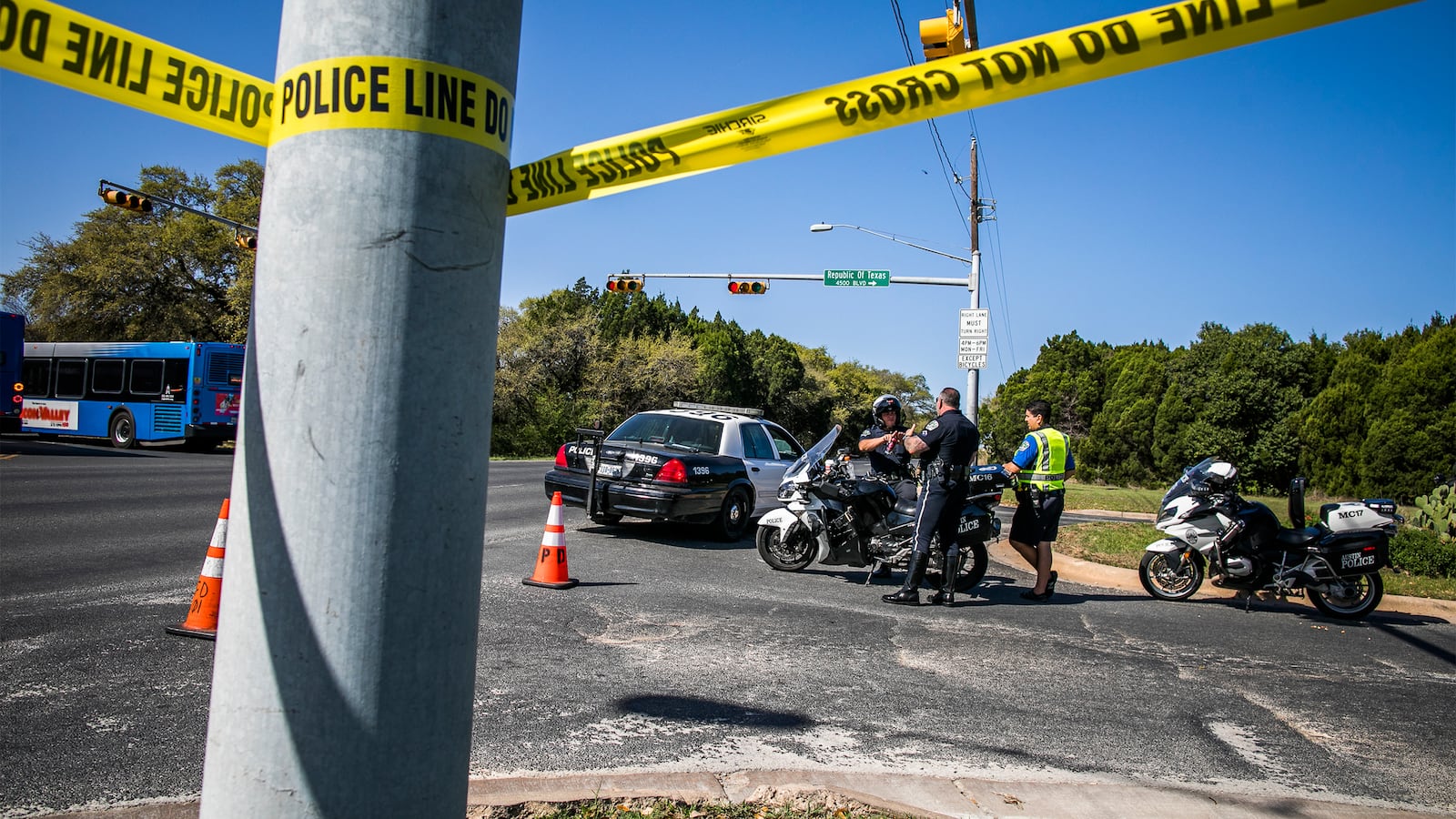After three package bombs rattled Austin, Texas this month, police warned locals to be wary of strange boxes outside their homes. But the latest attack, a tripwire bomb that injured two people on Sunday, suggests the bomber is changing their tactics to stay ahead of law enforcement, two former investigators in the Unabomber case say.
“They understand that law enforcement has been telling people, ‘Look out on your front porch. If it doesn’t say UPS or Amazon or FedEx, call the police,’” former FBI profiler Clint Van Zandt told The Daily Beast on Monday.
Van Zandt is credited with helping identify Ted Kaczynski as the Unabomber. From 1978 to 1995, Kaczynski mailed bombs (mostly to researchers and scholars) that killed three people and wounded 23 others.
Last week, another veteran Unabomber investigator predicted the Austin bomber would change their tactics. Former FBI agent James Fitzgerald told KXAN-TV that the attacker would likely adjust his modus operandi “because he knows there’s so much publicity right now.”
In response, the bomber added a tripwire and moved the package to the street, Van Zandt told The Daily Beast.
“That’s a level of diabolical sophistication to be able to move that quickly,” Van Zandt said.
“It’s a race against the clock right now,” he continued. “This person—or persons—has shown us they’re fully capable of killing.”
Austin police chief Brian Manley said Monday police believe all four explosions since March 2 are connected.
The first three package bombs, all detonated on the east side, killing 39-year-old Anthony Stephan House and 17-year-old Draylen Mason and wounding a 75-year-old Latina resident. Each of the three packages were left on the victims’ front porches. Both House and Mason were reportedly connected to two prominent black families in the Austin community, according to the Austin-American Statesman. Their families have “long histories fighting for racial justice and empowerment of the city’s African-American community,” the newspaper reported. Mason’s mother was also seriously wounded in one of the attacks.
The victims’ profiles have led to speculation that the bombs may have been racially motivated, although police have not announced a motive.
In Sunday’s bombing, two men in their twenties were seriously injured about 8:30 p.m. when they detonated a tripwire connected to a “suspicious package” on a residential street in southwest Austin, police said.
“With this tripwire, it changes things,” FBI agent Christopher Combs said at a press conference on Monday. “You really get into random attacks. It easily could’ve been two 8-year-old children walking down that sidewalk that tripped it.”
ATF agent Fred Milanowski noted during the same press conference that “any pressure put on that wire” from tripping on it, kicking it, or picking it up could have detonated the latest explosion. This means the form could change, in the future, to “a bag, a suitcase, a box,” he said.
Van Zandt noted that the bomber appears to be changing their frequency, in addition to their bomb designs. Ten days separated the first bombing from the next two. The most recent bomb went off six days later.
Even the first three porch bombs required their own technical know-how Van Zandt said, speculating that the bombs likely used triggers that were pressure-sensitive (detonating when the packages were lifted off the ground) or involved a mercury switch, which closes an electrical circuit when liquid mercury flows into electrodes—like would happen when the switch is unbalanced.
“If I were putting a bomb on your front porch, I’d have to set it down without blowing myself up,” Van Zandt said. “Then I’d have to remove some type of safety device that would disarm it so that when you picked it up, it would blow up. That’s an interesting level of sophistication.”
Van Zandt described most tripwires—“something like thin, nylon fishing line”—as extremely difficult to see during the day, “much less at night.”
Milanowski also said the suspect may have brought in some type of yard sign to anchor the tripwire.
“Our bomb technicians and our explosive specialists have seen so many devices over the years that they can put these devices back together,” Milanowski said. “We have a high degree of confidence in how the previous devices were built, and now all that evidence is at our laboratory for fingerprint and DNA analysis.”
Tripwire bombs are not particularly hard to build, a former U.S. Army Explosive Ordnance Disposal specialist who requested anonymity told The Daily Beast.
“You can find most things on the internet,” he said of tripwire instructions. “You could go to WalMart and make one [bomb] for maybe $5 or $10.” The explosive component of the bomb can also be assembled from commonplace items and internet instructions, he said.
Police chief Manley pleaded on Sunday with the bomber to share their “message” so that officials can understand the motive or ideology behind it.
“These events in Austin have garnered worldwide attention, and we assure you that we are listening,” he said. “We want to understand what brought you to this point, and we want to listen to you.”
For his part, Fitzgerald predicted that the bomber will either be caught or come forward with a message on his own.
“This person put a lot of time, effort, and energy—and probably some money too—to develop and put together these particular devices,” he told KXAN. “At some point, he’s going to let people know why he’s doing this.”
But Fitzgerald also told the station that, in nearly all cases, “the first crime scene is always the most significant one.”
Late Monday afternoon, Austin Mayor Steve Adler tweeted: “Austin, we’re going to get through this together. There’s a small law enforcement army here. We’ll find who is doing this and stop it.”
Between federal and local authorities, at least 1,000 law enforcement agents are searching for the bomber, Van Zandt estimated. But, he warned, the next clue might be another attack.
“The bad thing is, sometimes what we have is what we have, and we don’t learn anything else until there’s another incident,” he said. “Which, in this case, is another bombing and another person injured or killed.”







